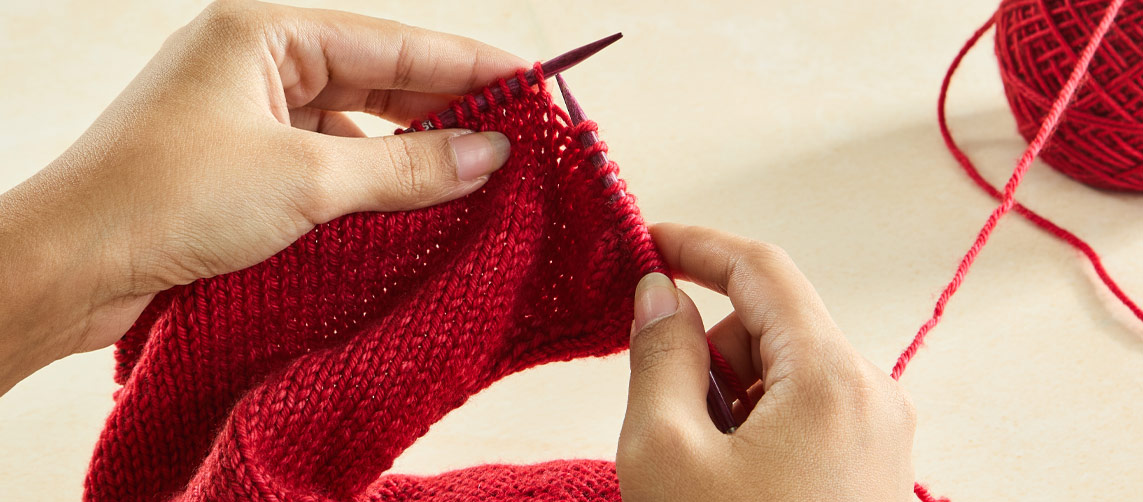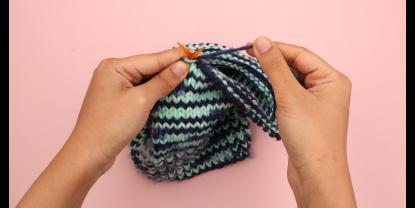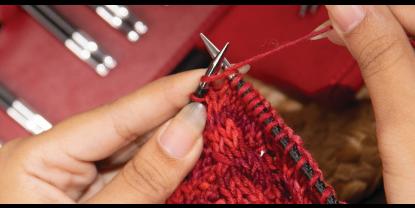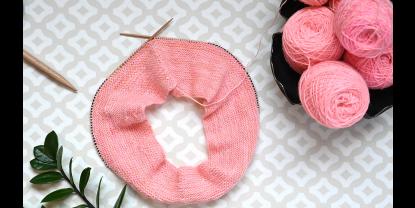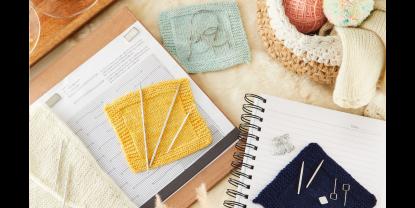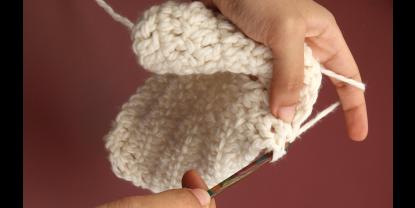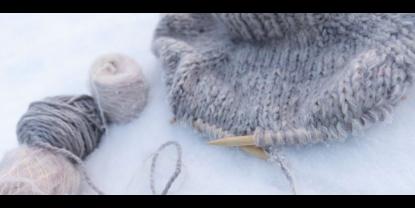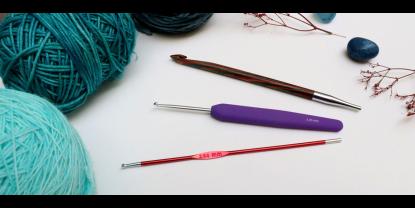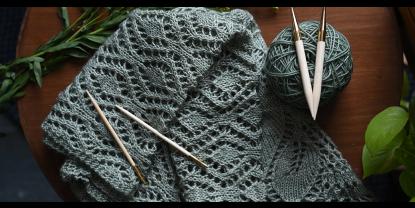Since their invention in the early 20th century circular knitting needles have revolutionized knitting. Originally designed as an alternative for double pointed needles for seamless circular projects, these versatile tools have since made a bold leap into back-and-forth knitting, offering unparalleled ease and comfort. Circular knitting needles hold the power to transform the chaotic juggle of heavy blankets on straight needles into a serene experience.
Whether you're a knitting pro or a curious newcomer and like to knit flat pieces, try the versatility and convenience of circular knitting needles.
Benefits of Circular Needles in Back and Forth Knitting:
- Weight Distribution: Circular needles evenly distribute the weight of large projects, reducing strain on wrists and arms
- Managing Large Projects: The flexible cable holds many stitches more comfortably than straight needles
- Space and Mobility: Compact and easy to handle in tight or public spaces, circular needles are less intrusive than straight needles
- Reduced Risk of Losing Stitches: The connecting cable secures stitches, preventing them from slipping off the needles when the work is set aside.
What are Circular Knitting Needles?
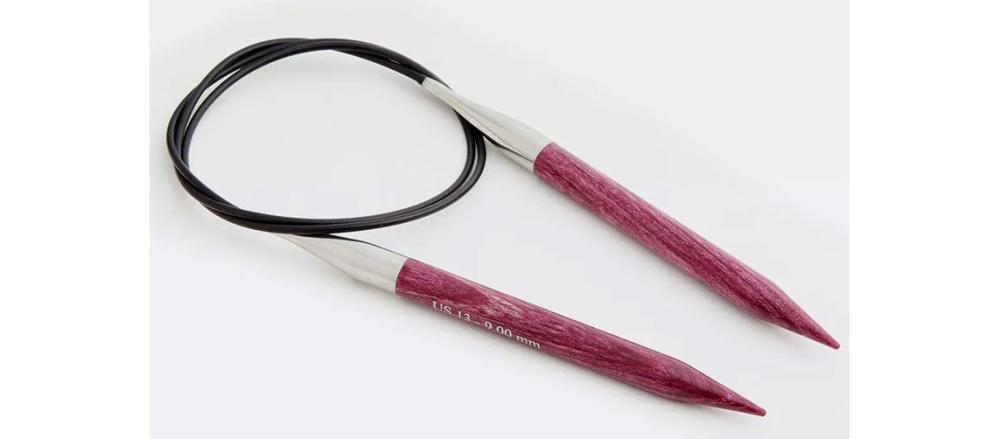
Just as the Swiss Army knife is a multi-functional tool essential for various tasks in camping, circular knitting needles offer diverse functionalities for different knitting projects, making them indispensable for any knitter. They have two pointed ends, made of wood, metal, or plastic, and are joined together by a bendy cable. The single-pointed ends and the cable come in different lengths, which are excellent for all types of knitting. KnitPro offers two sizes of needle tips - 4 inches and 5 inches- to accommodate the different requirements of the knitting community even further. Each size comes with its unique benefits.
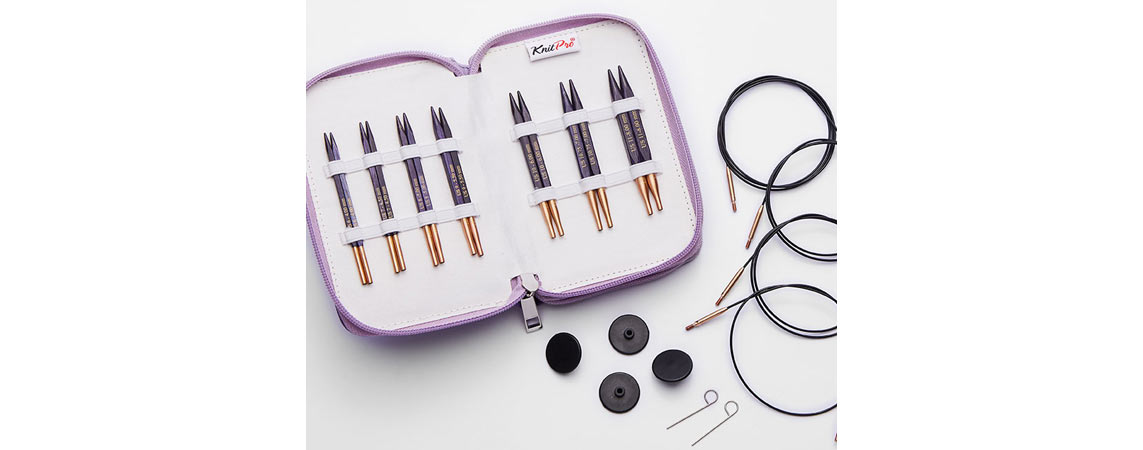
- Ideal for Knitting in the Round: The shorter 4-inch needle tips are particularly suited for knitting smaller circumference items in the round, such as sleeves, socks, and baby hats.
- Their compact size allows for easier maneuvering when working on projects with fewer stitches. The shorter length helps in creating a tighter, more comfortable circle, making it easier to knit without stretching the stitches too much, which is crucial for maintaining consistent tension in smaller circumferential projects.
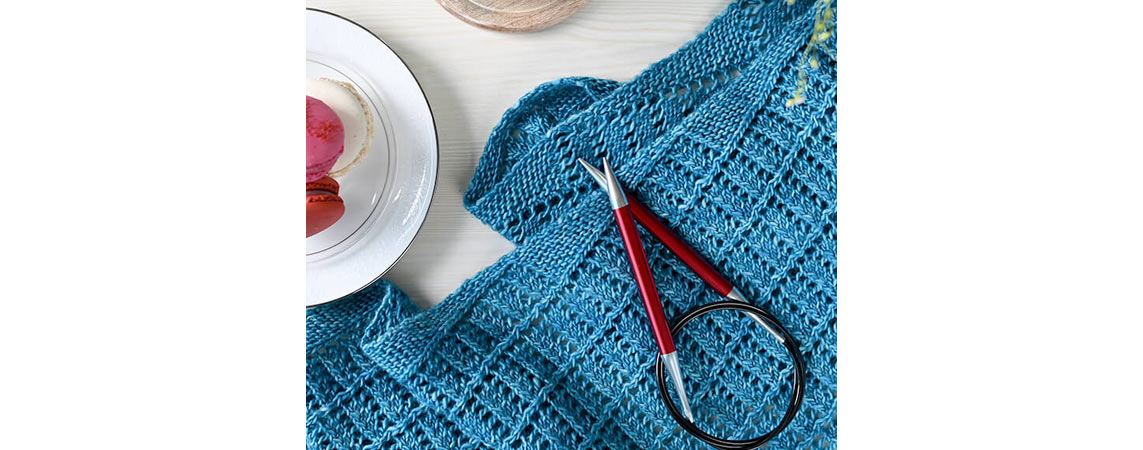
- Better for knitting flat pieces and large rounds: The longer circular needle tips are generally preferred for projects that are knitted flat, such as blankets, scarves, and larger shawls, but also for large rounds like sweaters.
- The longer needles offer more space to accommodate a larger number of stitches and to knit them off with the same yarn tension and stitch definition.
- With them, you can also hold your project more comfortably, better distribute the weight of your work, and your hands won't tire as quickly.
How long should the cable for Circular Knitting Needle Tips be?
The cable in circular knitting needles, which connects the tips, is not just a passive component; it plays an active role in your knitting process. The right cable length is pivotal, depending on whether you're knitting in the round or flat.
When knitting in rounds, it's even more important to match the cable length to the circumference of the project. For flat knitting - like a triangular shawl - the cable should comfortably accommodate the width of your project. This way, you achieve perfect yarn tension, distribute the weight of your work, and ultimately see your stitches better. The ideal cable for your knitting needles makes your knitting more comfortable and fluid.
Advantages of Using Interchangeable Needle Tips
Using interchangeable needle tips that let you change both the needle and cable lengths gives you a lot more options to customize how you knit.
- Customizable Needle Lengths: Change needle tip lengths to match project requirements, from shorter tips for small, in-the-round projects to longer tips for larger, flat pieces.
- Adjustable Cable Lengths: Attach various cable lengths to the needle tips, allowing for a transition from shorter to longer cables as the project size increases.
- Joining Cables for Large Projects: Use KnitPro’s unique tightening system to join multiple cables, creating extra-long cables for managing large or chunky flat projects.
- Ease of Storage and Portability: Interchangeable needles offer easy storage and transport due to their detachable parts, ideal for knitters on the go or those preferring an organized knitting kit.
Step-by-Step Tutorial: Knitting Back and Forth on Circular Needles
Step 1: Prepare Your Needles and Yarn. Choose the appropriate length of circular needles and yarn for your project.
Step 2: Create a slip knot and place it on one of the needle tips.
Step 3: Use your preferred casting-on method (such as the long-tail cast-on) to add stitches. If you are knitting a garment like a sweater or anything that will have a seam, remember to add 2 extra stitches to the edges. These extra stitches will create a smoother, neater edge that can be easily seamed later.
Step 4: Slide the stitches along the cable as you cast on, ensuring they are evenly distributed for ease of handling.
Step 5: Knit all stitches in the row as you would with straight needles in your stitch pattern, e.g. knit stitches.
Step 6: Once you reach the end of the row, turn your work just like you would with straight needles.
Step 7: Continue knitting across the next row. Repeat these steps, turning the work at the end of each row and continue in your stitch pattern.
Managing Tension and Avoiding Gaps
- Ensure that your stitches are neither too tight nor too loose. Consistent tension is key to a smooth fabric.
- Snug First and Last Stitches: Pay special attention to the first and last stitches of each row. Make sure they are snug to avoid gaps, but not so tight that they warp the edge of your work.
- Avoid wonky edges. Ensure you maintain neat edges in your flat-knit item.
Common Mistakes
- Avoid Twisting Stitches: Ensure that your stitches are not twisted on the needles, which can distort the fabric.
- Prevent Cable Kinking: Keep the cable straight to prevent it from looping or kinking, which can affect your knitting tension. KnitPro’s flexible swivel cables come with a steel core. They move with your knitting and are kink-free, thus preventing hand fatigue and an impeccable stitch pattern.
By combining the uses of both double-pointed and straight knitting needles, circular needles are the most versatile all-around tool in your knitting arsenal. And much like a master chef in a gourmet kitchen, KnitPro presents the most diverse array of fixed and interchangeable circular needles, catering to every requirement and skill level.




